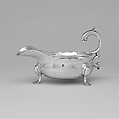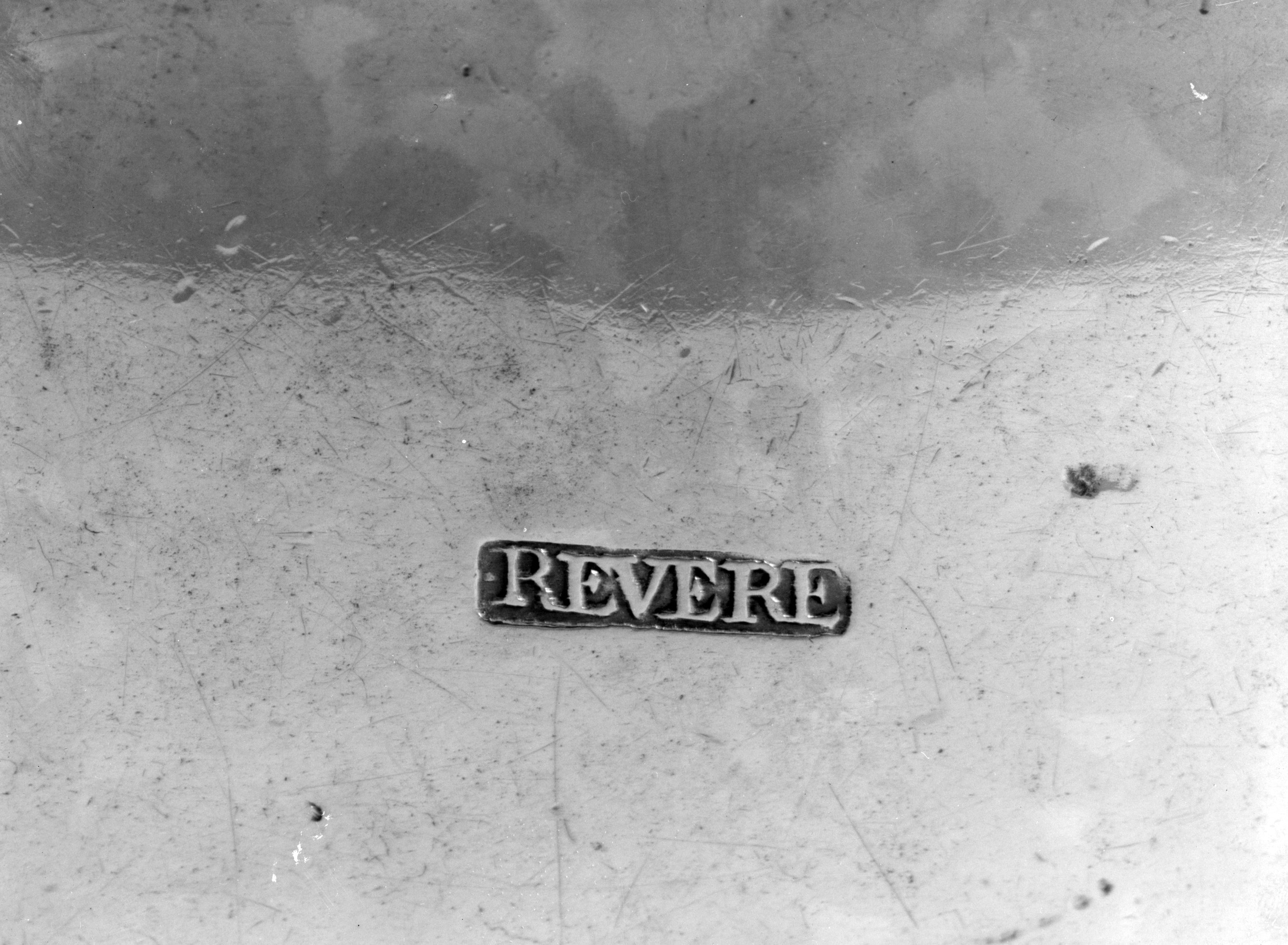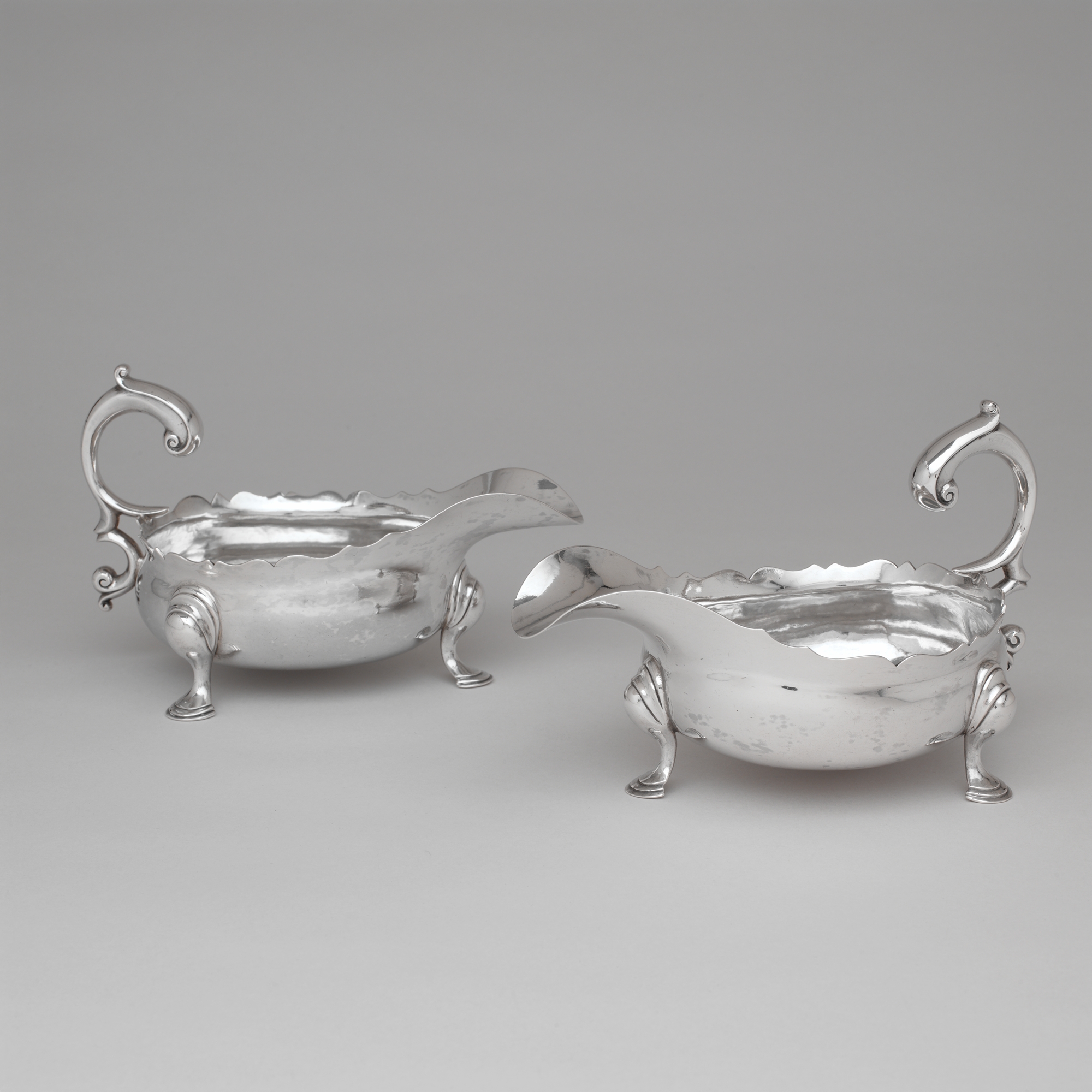Sauceboat
Possibly by Paul Revere Jr. American
Possibly by Paul Revere Sr. American
American silver sauceboats, also called butter boats, first appeared around 1725–30 and were intended to hold the melted butter, gravy, or sauces served with meat and vegetable dishes. Sauceboats were usually made in pairs or occasionally in sets of four, to be placed at either side of the table for easy access. The earliest models, following French and English fashion, had two pouring lips and two handles, but by the 1740s single-lipped vessels became the norm. With their scalloped upper rims, freestanding double-scroll handles, bulbous knees, and pad feet, the Revere sauceboats epitomize Rococo styling. Each is inscribed on its underside with the initials "M" over "M R" for Ruth Coney and Mungo Mackay, who were married in 1763. Mungo Mackay was a Scots sea captain whom the silversmith paid in 1781 for "freight on some goods from France."
Due to rights restrictions, this image cannot be enlarged, viewed at full screen, or downloaded.
This artwork is meant to be viewed from right to left. Scroll left to view more.




